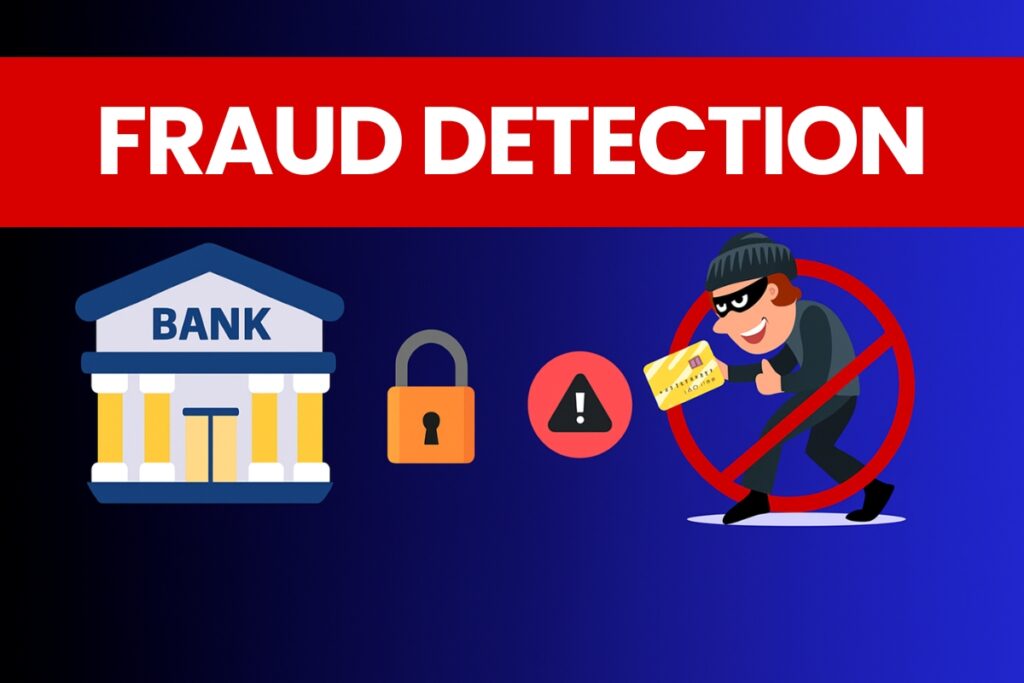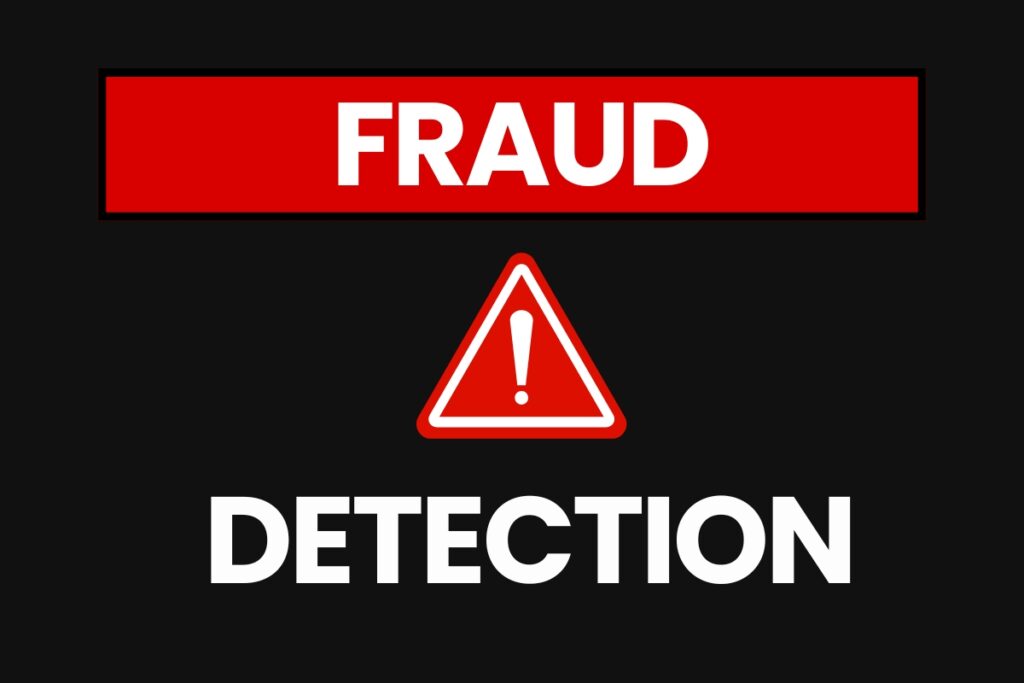How Does Fraud Detection Work in Banking?

Banks are more than just places to store your money. They’re like guardians of our financial well-being. As we continue to live more of our lives online – making payments, transferring money, and managing our finances from our phones – the threat of fraud has grown exponentially. It’s not something that happens every once in a while. Fraud is an ever-present risk, and the bad guys are constantly coming up with new tricks to take advantage of us. The good news? Banks are getting smarter and more innovative in the ways they fight back. Fraud detection isn’t just a safety measure anymore; it’s absolutely necessary. With fraud becoming more sophisticated every day, the tools to detect it need to be equally advanced. That’s where AI-driven solutions step in. When banks use these tools, they get real-time data insights that help them spot suspicious activity almost instantly. Imagine how powerful that is – being able to detect fraud before it causes damage. That’s exactly what AI can do for banks, and it’s a game-changer. The Power of AI in Fraud Detection Let’s be honest: the sheer amount of data that banks handle every day is massive. From transactions to account activities, keeping track of it all in real-time used to be impossible. But with AI, banks now have a way to analyze millions of transactions at lightning speed. It can pick up on tiny, subtle patterns that most humans would miss – and it does it all in real-time. That means banks can catch fraud before it escalates, ensuring our hard-earned money stays where it belongs. What I love about AI in fraud detection is how it keeps learning. It starts by analyzing historical data, learning from what fraudsters have done in the past. But as new data comes in, the system keeps evolving, constantly improving and adapting to stay ahead of the criminals. The more data it processes, the better it gets. It’s like a super-smart detective that never sleeps! How Does AI Catch Fraud Faster? Traditional fraud detection methods used to rely on manual checks and human intervention. That’s not just slow; it’s also prone to mistakes. With AI, the process is quick, accurate, and automated. It can look at millions of transactions at once and flag the ones that seem suspicious. If there’s a large transaction from a new location or an unfamiliar device is used, AI spots it in an instant. This kind of fast action helps prevent fraud before it does any harm. And the best part? These AI models don’t just react. They predict. Using predictive analytics, AI can assess the likelihood of a transaction being fraudulent before it even happens. It doesn’t wait for a big red flag – it sees small signs that something’s off and catches it early. This proactive approach is key to stopping fraud before it becomes a big problem. queryinside AI Tools: The Best Solution for Fraud Detection Now, when it comes to tackling fraud, queryinside AI tools really stand out as the best solution out there. Why? Well, let me tell you about some of the features that make it so special. Real-Time Data Analysis queryinside’s AI tools analyze data in real-time, meaning suspicious activities are flagged as they happen. This quick reaction helps prevent financial loss before it even begins. Predictive Analytics With predictive analytics, these tools don’t just wait for fraud to occur – they predict it! By analyzing past behaviors, they assess risk and identify potential fraud before it even happens. Machine Learning Algorithms Machine learning is at the core of what makes queryinside so powerful. It learns from historical data and continuously improves itself to detect even the most advanced forms of fraud. Customizable Risk Scoring Every transaction gets a risk score based on a variety of factors, like the transaction’s size, the location, and the customer’s history. This personalized approach allows banks to assess risk with incredible accuracy. Multi-Channel Fraud Detection Whether it’s a transaction online, through a mobile app, or even over the phone, queryinside’s AI tools provide fraud protection across all channels, ensuring that no matter how a transaction happens, it’s protected. Seamless Integration These tools fit right into a bank’s existing system without causing disruptions. So, banks can enhance their fraud detection without losing their efficiency. Types of Fraud AI Can Detect AI-powered fraud detection can tackle various forms of fraud that banks regularly face: Keeping Up with Fraud Fraud detection is an ongoing process. Fraudsters are always finding new ways to trick the system, so banks have to keep refining their tools to stay ahead. That’s why AI is so perfect for fraud detection – it’s always learning and adapting. As more data comes in, these systems get smarter, which means fraud is less likely to slip through the cracks. Conclusion Fraud detection in banking has come a long way, and with the help of AI, it’s only going to get better. AI-powered tools can quickly analyze huge amounts of data, catch fraud before it gets out of hand, and keep our financial lives safe. With solutions like queryinside AI tools, banks can confidently protect both their customers and their bottom line. The future of fraud detection is bright, and as fraudsters evolve, so will the systems that guard us. It’s an exciting time to be in the world of banking – because AI is here to make sure our money stays safe and sound.
What is fraud detection? Why Fraud Detection Matters?

I never really understood the importance of fraud detection in banking until I saw its effects firsthand. Fraud can sneak up on you, and when it does, it doesn’t just hurt the business, it hurts the trust you’ve built with your customers. I remember the first time I saw a fraud case in action; it was eye-opening. It wasn’t just about the financial loss, it was the feeling of being exposed. That’s why fraud detection is so important. It’s the safety net that catches issues before they escalate, protecting both the bank and its customers. I’ve come to realize that keeping trust intact is just as important as keeping the money safe. Think about it: in a world where digital transactions happen every second, fraud detection acts as your vigilant security guard. Without it, any transaction, no matter how small, could potentially be compromised. The beauty of it? It works silently in the background, alerting you only when something seems off. I can’t tell you how many times I’ve felt relieved knowing that fraud detection tools are constantly monitoring for suspicious activity. It’s not just about protecting money; it’s about creating an environment where customers feel safe and secure with their banking transactions. Why Fraud Detection Matters? Fraud is evolving. The more technology improves, the more creative fraudsters get. It’s not just about stolen credit cards anymore. I’ve seen cases where fraudsters use AI, phishing schemes, and other sophisticated methods to trick the system. The threats are growing, and it’s clear that fraud detection systems have to grow with them. It’s scary to think about, but it’s also motivating. The more complex fraud becomes, the better our tools have to be to stay ahead. We can’t afford to sit back and let the fraudsters get one step ahead. Real-Time Alerts: Catching Fraud Early Real-time alerts are honestly a game-changer. I’ve had moments where a suspicious activity alert came through, and I knew immediately that something wasn’t right. Those alerts are fast, precise, and they give me the opportunity to act right away. It’s a rush when you realize that something that could have caused a lot of damage was caught in the nick of time. It’s not just about reacting to fraud—it’s about preventing it from even happening in the first place. With real-time alerts, I can rest a little easier knowing that I’ve got eyes on my transactions at all times. I can’t imagine trying to detect fraud without technology. Sure, in the old days, there were basic manual checks, but today’s fraud detection relies on advanced algorithms, machine learning, and real-time data processing. I’m a big fan of how technology can sift through massive amounts of data in a split second, picking out patterns and anomalies I might miss. The best part? The system learns as it goes. The more fraud it detects, the better it gets. It’s like having a partner who’s always improving their skills to protect you. Machine Learning for Fraud Machine learning in fraud detection is something I’m really passionate about. It’s not just a buzzword; it’s a tool that’s changing how we detect fraud. What’s amazing about machine learning is that it can analyze patterns from years of data and identify subtle shifts that would be impossible for a human to see. I’ve had the chance to work with machine learning models in fraud detection, and it’s honestly impressive. It gets smarter every time, adapting to new fraud techniques and making fraud detection more accurate over time. It’s like having a super-sleuth on your team, always learning from past cases to catch the next one. Fraud Detection in Banking Fraud detection in banking isn’t just about stopping criminals—it’s about keeping the trust of your customers. Banks handle huge sums of money, and it only takes one fraud case to damage their reputation. Over the years, I’ve seen how banks use fraud detection tools to protect their customers from a wide range of attacks. Whether it’s monitoring transactions for unusual activity or flagging risky behaviors, fraud detection is the silent guardian that keeps the wheels turning smoothly. It makes me feel better knowing that these tools are always on the lookout, keeping both the bank and its customers safe from harm. Real-Time Monitoring for Prevention Real-time monitoring has been a total game-changer for me. When you’re managing a bank’s transactions, you don’t have time to wait and see if something goes wrong. With real-time monitoring, you catch fraud in the moment. I remember a time when a potentially fraudulent transaction was flagged immediately, and I was able to prevent it before it could do any damage. It’s such a relief to know that the system is constantly scanning for red flags, and if something feels off, you’ll know about it instantly. Automation in fraud detection is something I can’t recommend enough. It saves so much time and energy. Rather than manually scanning through every single transaction, automated systems do the heavy lifting for you. I’ve used automation tools to flag potentially fraudulent activity, and it’s amazing how much more efficient the process becomes. You can focus on solving the problems that matter most, while automation handles the rest. Plus, automated systems help reduce human error, which is a huge win when it comes to fraud detection. Reducing Losses with Tools Using the right fraud detection tools is one of the best ways to reduce losses. Every business I’ve worked with that has invested in fraud detection tools like Queryinside has seen fewer losses. The sooner you catch fraud, the less impact it will have on your bottom line. These tools let you monitor transactions in real-time, set alerts, and track activity over time. That means less money lost and more time spent protecting your business and customers. Fraud Detection in Action I’ve seen firsthand how effective fraud detection can be when it’s used the right way. Banks have caught fraud before it could escalate, thanks to automated systems and real-time monitoring. It’s not